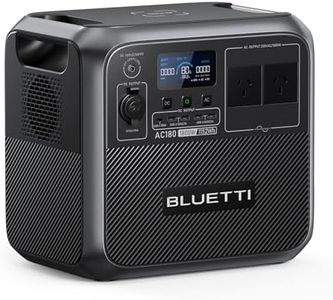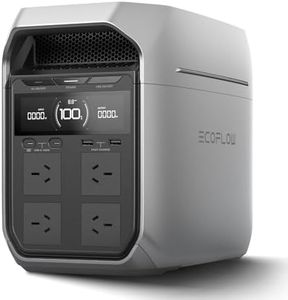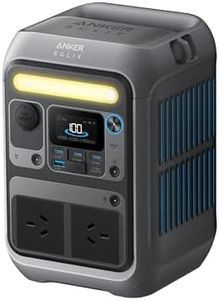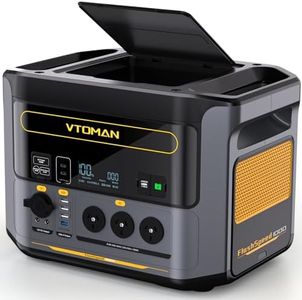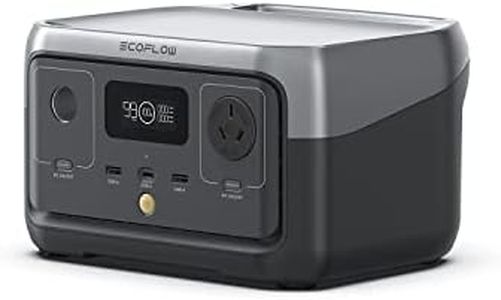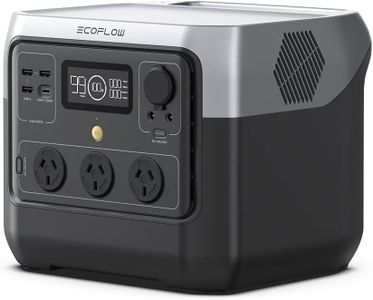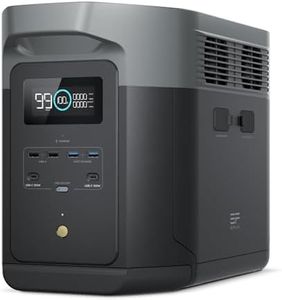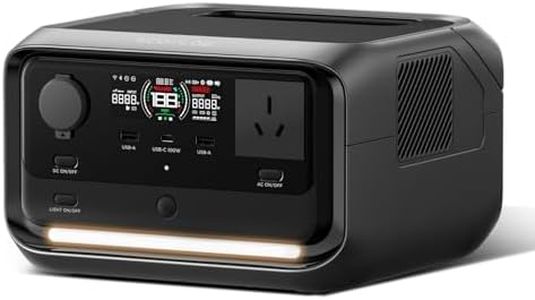We Use CookiesWe use cookies to enhance the security, performance,
functionality and for analytical and promotional activities. By continuing to browse this site you
are agreeing to our privacy policy
10 Best Camping Power Station
From leading brands and best sellers available on the web.Buying Guide for the Best Camping Power Station
Choosing a camping power station can make your outdoor adventures much more enjoyable and convenient. Power stations provide portable electricity to charge your devices, run small appliances, and provide lighting when traditional power isn’t available. The best approach is to think about what you want to power during your trip—phones, laptops, mini-fridges, or lights—and how long you’ll be away from conventional power sources. Knowing your needs helps you focus on the right characteristics when comparing different options.Battery Capacity (Wh or mAh)Battery capacity tells you how much energy the power station can store, usually measured in watt-hours (Wh) or milliamp-hours (mAh). Higher numbers mean the power station can run more devices or keep them going longer before needing a recharge. Capacity can range from very small (good for charging a phone a few times) to very large (enough to run several devices for days). Think about how many devices you'll use and for how long—short day trips require less, while longer or more equipment-heavy trips need more capacity.
Output Ports and TypesOutput ports are the different ways you can connect your devices to the power station, such as USB, AC (like wall outlets), or DC car-style ports. More ports and a wider variety means you can charge more devices at once or run different kinds of gear. If you only need to charge phones, a few USB ports might be enough. If you want to power a laptop or a small fridge, look for AC outlets. Consider what you plan to bring so you’ll have the right connections.
Weight and PortabilityWeight and size impact how easy it is to carry the power station to your campsite. Compact, lightweight models are best for hiking or moving around often, while larger, heavier models are fine for car camping where you don’t need to carry them far. If you’ll be walking a lot, go lighter; if it’s staying at a base camp, prioritize capacity over weight.
Recharge OptionsRecharge options are how you refill the power station’s battery—usually from a wall outlet, car charger, or solar panels. More ways to recharge mean more flexibility, especially on longer trips. If you plan to be off the grid for several days, having the option to add solar panels can keep your station powered. If you’ll have access to a car or a cabin, those methods work, too. Think about where and how you’ll recharge to avoid running out of power.
Power Output (Wattage)Power output refers to the maximum amount of electricity the station can deliver at once, measured in watts (W). Higher wattage allows you to run bigger or more demanding devices. Small stations (under 200W) are fine for phones and lights. Medium stations (200W–500W) can handle laptops and small appliances. Large stations (over 500W) are needed for things like mini-fridges or medical devices. Check the power needs of your gear and make sure your power station can handle them.
Safety FeaturesSafety features include protections against overcharging, overheating, or short-circuiting. These keep both the power station and your devices safe while in use. Look for stations with built-in protections, especially if you’re using sensitive electronics. These features are important for peace of mind and for preventing damage or hazards during your trip.
